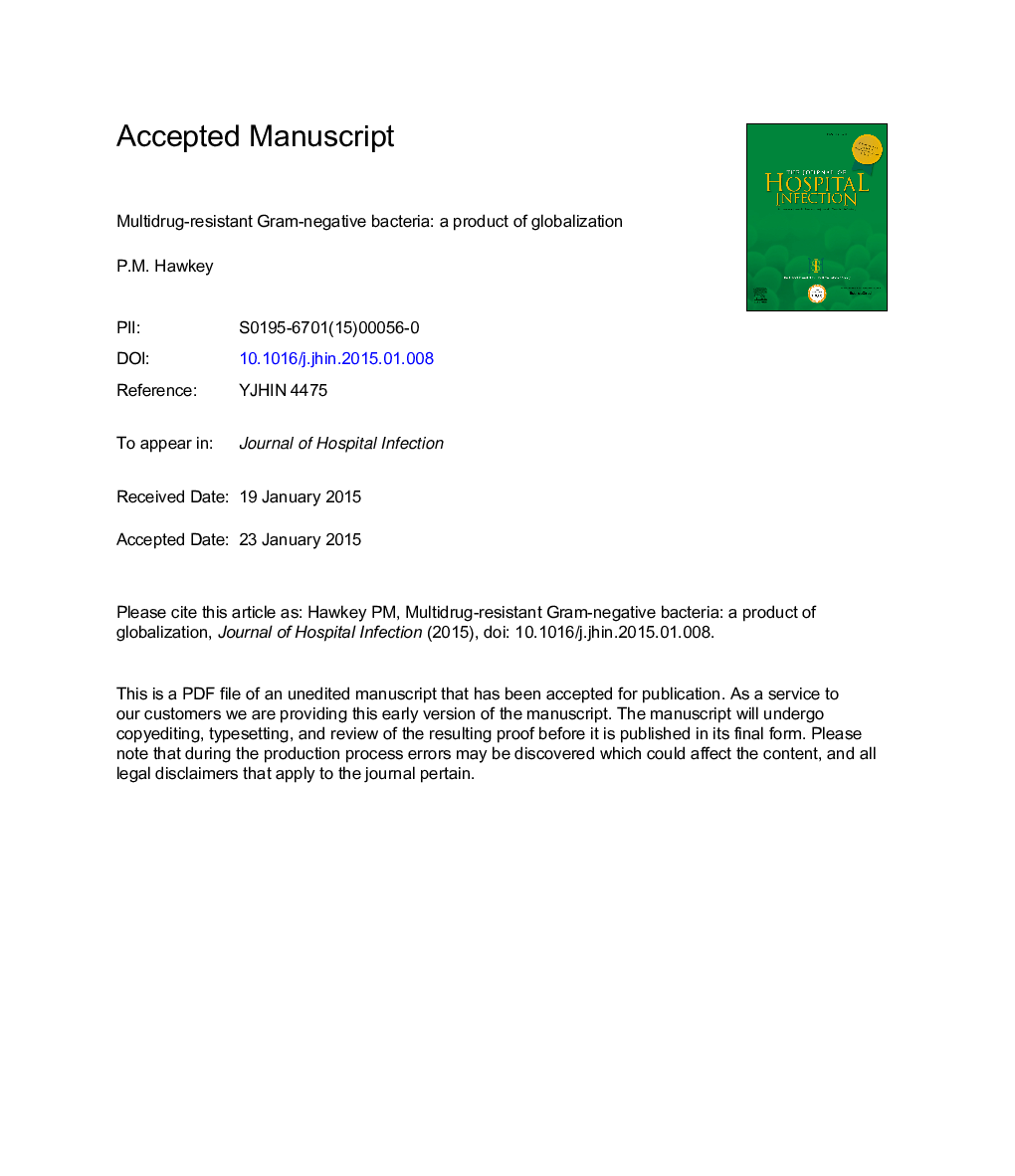| Article ID | Journal | Published Year | Pages | File Type |
|---|---|---|---|---|
| 6122094 | Journal of Hospital Infection | 2015 | 15 Pages |
Abstract
Global trade and mobility of people has increased rapidly over the last 20 years. This has had profound consequences for the evolution and the movement of antibiotic resistance genes. There is increasing exposure of populations all around the world to resistant bacteria arising in the emerging economies. Arguably the most important development of the last two decades in the field of antibiotic resistance is the emergence and spread of extended-spectrum β-lactamases (ESBLs) of the CTX-M group. A consequence of the very high rates of ESBL production among Enterobacteriaceae in Asian countries is that there is a substantial use of carbapenem antibiotics, resulting in the emergence of plasmid-mediated resistance to carbapenems. This article reviews the emergence and spread of multidrug-resistant Gram-negative bacteria, focuses on three particular carbapenemases â imipenem carbapenemases, Klebsiella pneumoniae carbapenemase, and New Delhi metallo-β-lactamase â and highlights the importance of control of antibiotic use.
Keywords
Related Topics
Life Sciences
Immunology and Microbiology
Applied Microbiology and Biotechnology
Authors
P.M. Hawkey,
